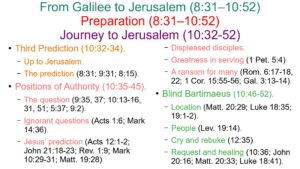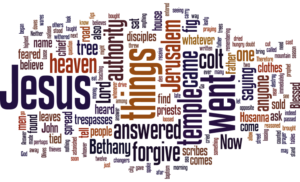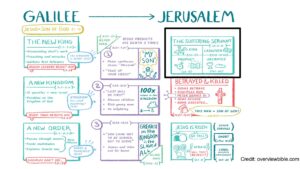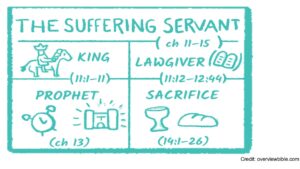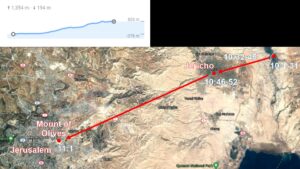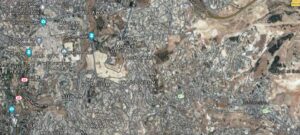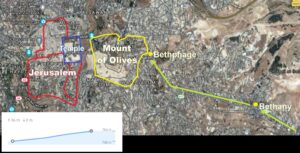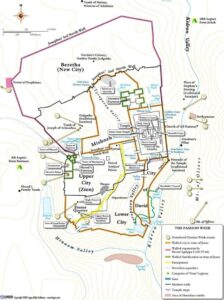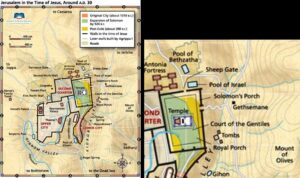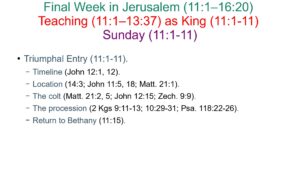Jesus from Galilee to Jerusalem
Mark 8:31–10:52
Preparation
First Prediction of Death and Resurrection (8:31).
The Kingdom is Near (1:15; 9:1)
Final Events in Galilee (8:31–9:50).
Second Prediction of Death and Resurrection (9:31)
Kingdom Has Small Beginnings (4:3-32; 10:29-31)
At Judean Borders (10:1-31).
Third Prediction of Death and Resurrection (10:33-34).
Beware Herod & Pharisees (8:15; 10:33-34)
Journey to Jerusalem (10:32-52).
Third Prediction (10:32-34).
Positions of Authority (10:35-45).
 Blind Bartimaeus Healed (10:46-52).
Blind Bartimaeus Healed (10:46-52).Location—Jericho (10:46).
The people—multitude and Bartimaeus (10:46).
The cry and the rebuke (10:47-49).
Request and healing.
Again, Jesus asks the same question He asked James and John, “What do you want Me to do for you?” (10:36).
He didn’t want greatness, but he did want the impossible, to be able to see again. Recall, this word in Greek suggests he was once able to see.
He calls Jesus Rabboni, which John translates as “teacher” (John 20:16).
The only other person to do this was Mary Magdalene.
We see in the eyes of Bartimaeus, not only is this the Son of David (the Messiah), but also a great teacher. Matthew and Luke say he addressed Him as “Lord” (Matt. 20:33; Luke 18:41).
He sees this Man before Him as the Christ, the Son of David, as a great teacher, and as Lord—all without being able to see.
He sees from what little exposure he had to Jesus, while the Twelve were with Him for three years were still not quite seeing, and wouldn’t see until Pentecost.
Again, his great faith has made him well, and he goes with Jesus along the road from Jericho to Jerusalem.
Jesus’ Final Week in Jerusalem
Mark 11:1–16:20
Teaching (11:1–13:37)
King (11:1-11)
 Sunday: Triumphal Entry (11:1-11).
Sunday: Triumphal Entry (11:1-11).Timeline.
The traditional timeline presents these last several chapters, from the triumphal entry to the resurrection as occurring in the period of one week.
Part of the reason for that is the triumphal entry in John’s gospel occurs five days before the Passover (John 12:1, 12).
This makes the triumphal entry having occurred on Sunday.
 Matthew and Mark have the clearest timelines after this event, but there is an apparent conflict.
Matthew and Mark have the clearest timelines after this event, but there is an apparent conflict.Matthew seems to state that the cleansing of the temple occurred on the same day as the triumphal entry, where Mark states it occurred on the next day, Monday.
First, they don’t claim that they wrote events in chronological order.
Second, I think Mark’s account reflects the correct timeline. Mark splits up the withering of the fig tree and the lesson associated with it, while Matthew does not. It makes sense from a storytelling perspective to keep them together. Since life rarely works that way, Mark’s timeline makes more sense.
By the time Jesus had entered into Jerusalem, it was already pretty late in the day, so instead of doing much healing or teaching, He simply looked around and returned to His lodge in Bethany.
There are other timeline issues later on in the week, but we will cover those later.
Location.
Jesus is coming to Jerusalem from Jericho, and He passes by Bethphage, Bethany, and the Mount of Olives.
 We’ll note in 11:11 that Jesus is staying in Bethany with His disciples, possibly with Simon the leper or with Mary, Martha, and Lazarus.
We’ll note in 11:11 that Jesus is staying in Bethany with His disciples, possibly with Simon the leper or with Mary, Martha, and Lazarus.We will see an event with Simon recorded later in Mark (14:3), so we will keep that discussion for another time, but the latter three were great friends of Jesus (John 11:5).
These three locations, Bethphage, Bethany, and the Mount of Olives were very near Jerusalem, Bethany being about two miles away and the other two on the way (John 11:18).
Matthew suggests that they are in Bethphage when Jesus asks His disciples to “Go into the village opposite you,” suggesting the colt they are about to look for is in Bethany (Matt. 21:1).
 As you see on the map, Bethphage is right there at the Mount of Olives (as Matthew also indicates).
As you see on the map, Bethphage is right there at the Mount of Olives (as Matthew also indicates).Here is the elevation from Bethphage to the top of the Mount, showing the climb that Jesus had to make in order to get there, about 36 m or 120 ft.
This would mean He passed by Bethany on the way to Bethphage. He could have arranged for the use of the colt as He was passing through, or He could have just known that His instructions would allow His disciples to take the colt.
 This meant that His disciples had to backtrack to acquire the colt.
This meant that His disciples had to backtrack to acquire the colt.At the very least, He likely arranged for lodging in Bethany on His way through.
Here is a map of Jerusalem from the first century which shows my reasoning behind the outline I gave on the last map.
Here is another map of Jerusalem at the time of Jesus, and He could have entered it by either of these gates on the east side of the city. This is the side of the Mount of Olives.
Here is “B-roll” of a model of Jerusalem from the first century – (starts at time 26:50).
The colt.
 Jesus tells two of His disciples to go into the village opposite them, likely Bethany, and take the first young donkey (colt) they find.
Jesus tells two of His disciples to go into the village opposite them, likely Bethany, and take the first young donkey (colt) they find.As a sidenote, I would find it deliciously ironic if these two disciples were James and John. People aspiring to greatness reduced to errand boys. Jesus would be teaching them the greatness of service. But as it stands, the two disciples are left unnamed.
What do you think is going through these two disciples’ minds? I personally would be uncertain about apparently stealing something like this. I’m not sure I would be too comfortable doing it, but the Lord has asked people to do things they weren’t comfortable with doing on many occasions (e.g. man in 1 Kgs 20 who refused to strike a prophet; Ezekiel who balked at baking something over burning human feces in Eze. 4; Peter who refused to eat anything unclean in Acts 10).
Matthew suggests that the colt was tied to a donkey as well, presumably its mother (Matt. 21:2).
 Again maybe Jesus arranged this ahead of time, or perhaps this was an ostensibly random colt they were apparently stealing.
Again maybe Jesus arranged this ahead of time, or perhaps this was an ostensibly random colt they were apparently stealing.Jesus tells them to tell the owners simply that, “The Lord has need of it.”
We see that that’s exactly what happens and the owners immediately acquiesce to the claim. Would you have acquiesced so easily? Under what circumstances would you have allowed them to take your colt?
This could show any number of things:
The owners recognized Jesus as Lord and perhaps even His disciples.
Perhaps the owners thought they meant the Lord, i.e. God, needed it—which wouldn’t be wrong, either.
Maybe the owners thought they meant that their lord/master needed it.
Or again, maybe it was arranged ahead of time, and the disciples didn’t know about it.
 In any event, Jesus knew this line would work. And He did return to Bethany afterward, which likely included returning the donkey.
In any event, Jesus knew this line would work. And He did return to Bethany afterward, which likely included returning the donkey.As Jesus said, the colt was tied up “by the door outside the street”—it was right there on the side of the road.
We see that the colt had never been ridden before. This was a sign of honor to allow someone to be the first to ride a particular animal.
Of course, this was a fulfillment of the prophecy given in Zech. 9:9 that both Matthew and John reference (Matt. 21:5; John 12:15).
In lieu of a saddle, His disciples (perhaps many who traveled with Him at least since Jericho) placed their clothes, likely cloaks, upon it.
